What are the top 20 best cities in Italy?
Italy is famous for so many things. It is a country renowned for everything from food to fashion and from art to architecture. But certainly, one of the things that it’s most famous for is its cities. Italy’s cities lure visitors back to Italy time and again. Some of its most famous cities – Rome, Venice or Florence – need no introduction. However, one of the things we love about Italy is its diversity and nowhere is this more apparent than in its cities.
Our guide to the top 20 cities in Italy will certainly have some cities you expect to see but we reckon some of our choices may also surprise you.
Milan
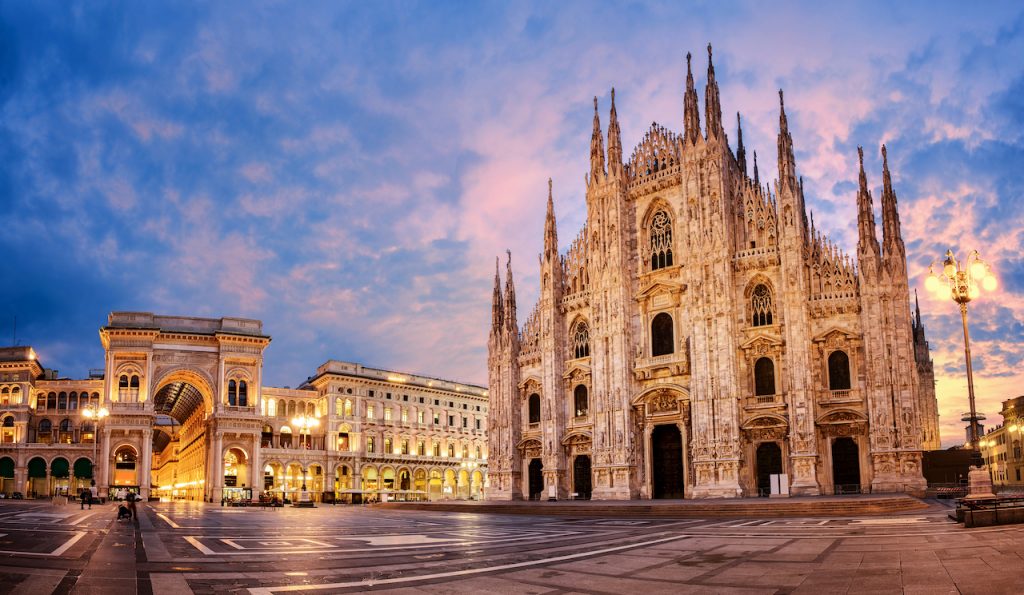
A city in the industrial north of Italy, Milan has to be Italy’s most fashionable city. Host of an annual Spring-Summer and Autumn-Winter fashion week, it’s also home to one of the world’s most beautiful shopping centres – the Galleria Vittorio Emanuele II.
But Milan has plenty of other art and architectural gems to admire too. Milan’s iconic Piazza del Duomo is where you’ll find Italy’s largest cathedral – the Duomo di Milano – whilst at the Convent of Santa Maria delle Grazie you’ll find one of the world’s most famous artworks – Leonardo da Vinci’s The Last Supper. And there are plenty of museums to pique your interest, among them the Museo del Novecento where you will find plenty of more modern art on display and the Pinacoteca located within the Sforzesco Castle.
The city also has a lively nightlife, centred around Milan’s canal district – I Navigli – whilst opera lovers can enjoy an evening at one of the world’s most famous opera houses, La Scala.
Check out our guide to spending 48 hours in Milan for more information about what to see and do in Milan.
Florence
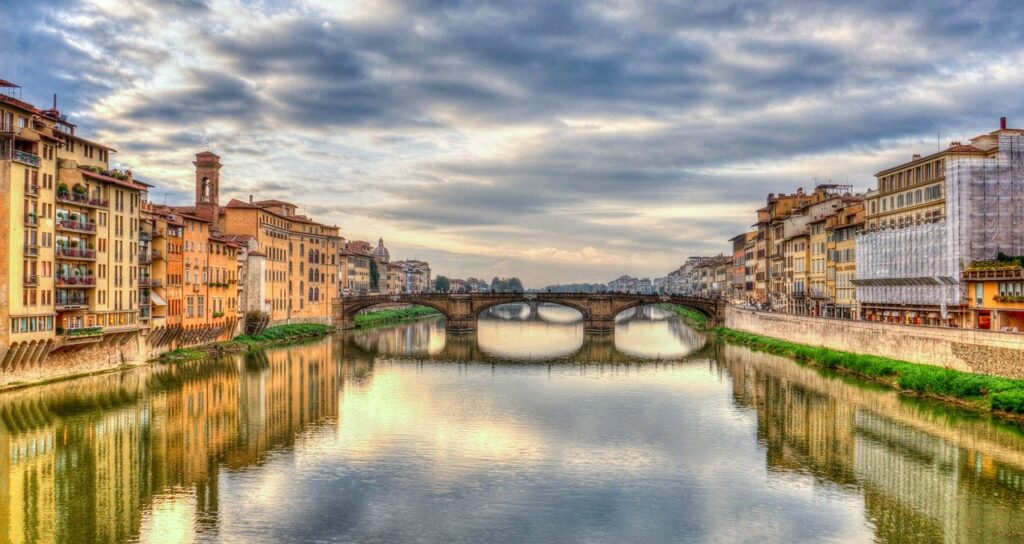
Whilst Florence has some stiff competition, it remains our favourite city in Italy. Its beauty is unparalleled and it has such a wealth of things to see and do, particularly if you’re an art lover. Even if you had a whole week in Florence, you’d struggle to do justice to the city. Start your visit in the Piazza del Duomo where you will find the Cathedral of Santa Maria del Fiore, Giotto’s Campanile and the Baptistry. Make sure you also visit the Piazza della Signoria (home to the Palazzo Vecchio), the Galleria dell’ Accademia, the Museo dell’ Opera and Uffizi. Before you leave, don’t miss the chance to walk over one of the world’s most famous bridges – the Ponte Vecchio – and if you have longer, then it’s well worth taking a stroll around one of Florence’s many beautiful gardens.
Check out our Florence travel guide for more information on what to see and do in the city.
Rome

A walk around Italy’s capital city, Rome, is like a living history lesson. It’s home to iconic Roman buildings such as the Colosseum, Forum and Pantheon, but it also has a number of much more recent historic sights to admire too such as the Spanish Steps and Trevi Fountain. More recent again is the Emmanuel II National Monument (Vittoriano), also called the Altare della Patria (Altar of the Fatherland) which was built between 1885 and 1911 to mark the unification of Italy. Whilst opinion in Italy is divided on it, we highly recommend taking the glass elevator ride up to its roof to admire the views. And, of course, no visit to Rome would be complete without a visit to the world’s smallest state and head of the Roman Catholic Church – the Vatican city.
Check out our guide for spending 48 hours in Rome for more information about what to see and do in Rome.
Bari
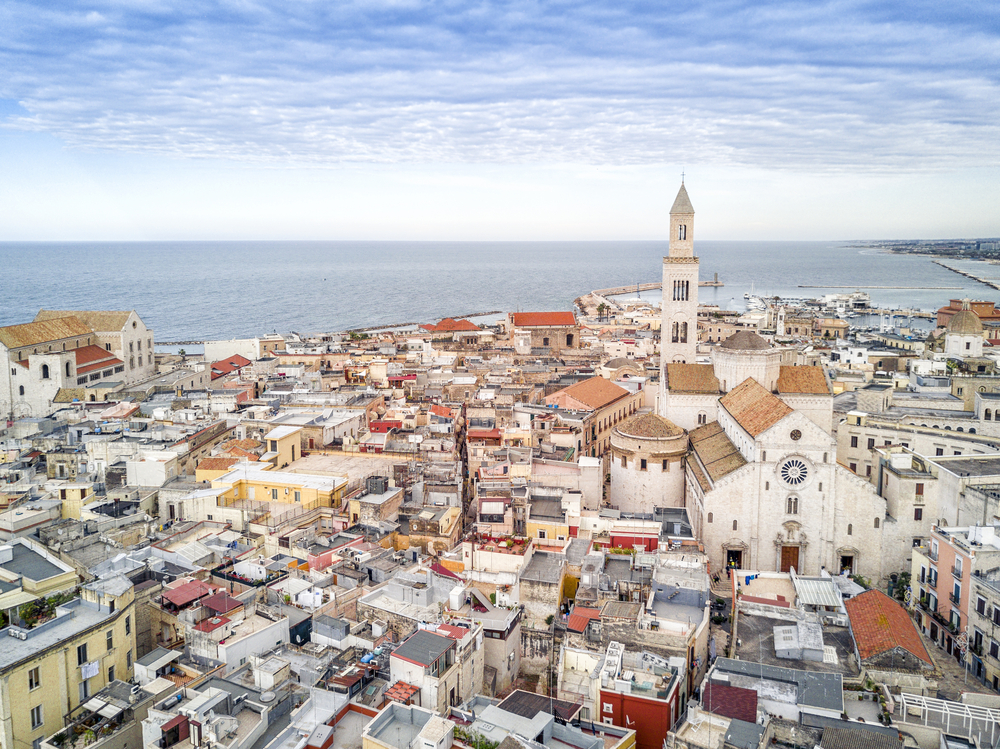
One of the few Italian cities in our list on the coast, Bari is the capital of the Puglia region of Italy. It’s also Italy’s largest port on the Adriatic coast and has a bustling harbour. Bari’s old town is a myriad of narrow cobbled streets which are a delight to stroll around as is the new town of Bari – the Murat district. Built during Napoleon’s time by Joachim Murat, King of Naples, this part of Bari is laid out on a rectangular shaped grid pattern and borders the sea on one side. It’s also where you will find Bari’s main shopping district.
A few sights are well worth making a bee-line for when visiting Bari. The first of these is the Norman castle dating back to 1132 and built by Roger II of Sicily. It’s still in excellent condition and the views from the castle over the city of Bari are superb. Also worth a visit is the Romanesque Basilica of Saint Nicholas, the Orta Botanico dell’ Universita di Bari (botanic gardens) and the Pinacoteca (art gallery with a wide selection of art dating from the 11th to 19th centuries). And leave time to take a stroll along the long stretch of seafront promenade – the Lungomare Nazario Sauro.
Discover more about Bari on our blog.
Venice

Arguably, the most famous city in Italy, Venice is yet another city that needs no introduction. But you can still discover a hidden side of Venice. Find out more about what to see and do in Venice away from the usual tourist traps on our blog.
Venice sits atop 118 different islands, all of which are separated by a network of canals and linked by over 400 bridges. The most famous of these are the Rialto Bridge and Bridge of Sighs. Venice is also home to St Mark’s Square where you will find the Basilica and Campanile of San Marco as well as the Palazzo Ducale (Doge’s Palace). If you’re an art lover, then definitely make sure you visit the Gallerie dell’ Accademia where you will discover Leonardo da Vinci’s Vitruvian Man or for a taste of surrealist modern art head to the Peggy Guggenheim Collection instead.
Before leaving Venice, make sure you try out the fritelle (best described as a fried doughnut) from the Pasticceria Tonolo and wash it down with a coffee in the world’s oldest cafe – Caffe Florian – or with a bellini in the birthplace of the cocktail – Harry’s Bar. And, of course, it’s pretty much obligatory to enjoy a gondola ride when visiting Venice!
Verona
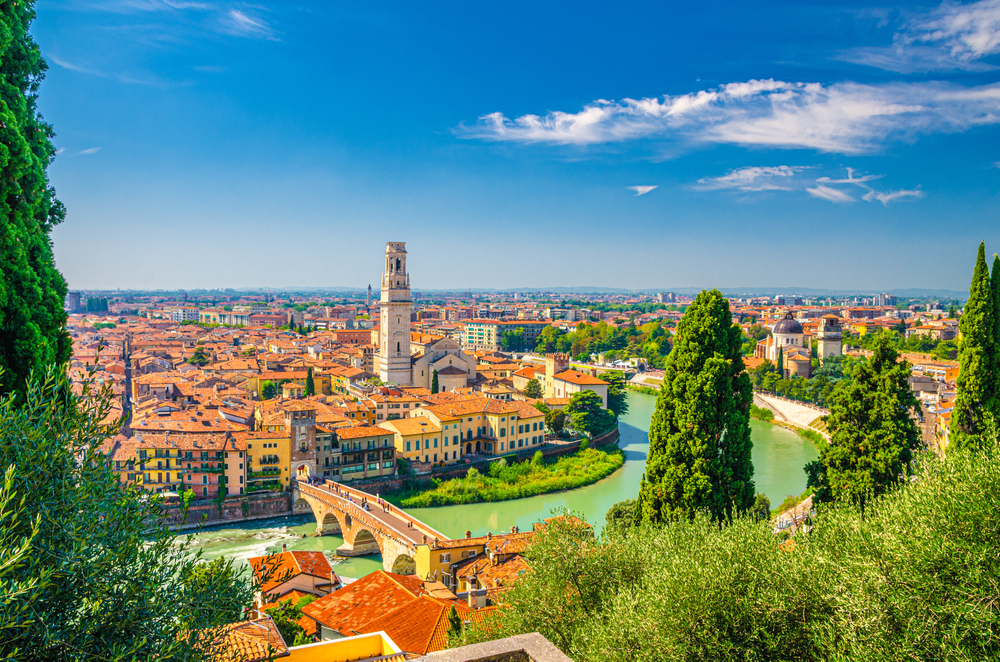
The city of Verona is one of Italy’s UNESCO World Heritage sites. Famous for being home to the star-crossed lovers – Shakespeare’s Romeo and Juliet – thousands of tourists flock each year to admire their balcony at the House of Giulietta or to attach padlocks to the gates, leave letters in the cracks in its walls or simply to have their photo taken. However, Verona offers so much more than this. Verona’s history is a long and fascinating one and its Roman roots can still be very clearly seen in the Arena di Verona. Dating back to 30 AD, it is the third largest amphitheatre in Italy and remains incredibly well preserved. If you can, enjoy one of the many Summer concerts it plays host to each year. (But make sure to bring a cushion! The ancient stone seating is certainly not comfortable by modern day standards!)
There are plenty of other sights to see in Verona too including a number of churches such as the Duomo di Verona, Santa Anastasia and San Zeno Maggiore. The Castelvecchio Museum is also worth a visit.
For the best views of the city, take the 368 steps to the top of the Torre dei Lamberti (or you can opt for the elevator ride instead)! At 84 metres tall, it will offer some great views over the rooftops of Verona. Or head to the Piazzale Castel San Pietro at sunset to enjoy some wonderful views over the city.
Mantua

A city surrounded by three artificial lakes, Mantua sits in the north of Italy in the region of Lombardy. It owes much to the House of Gonzaga who ruled the city from the 14th to 18th centuries and who made Mantua a key Renaissance centre. The city is home to a number of palaces and castles which would rival any in Italy including the Palazzo Te, the Castello San Giorgio and the Ducal Palace where the Gonzaga family once lived. If making the trip to Mantua, make sure you also visit the Cattedrale di San Pietro, the Basilica di Sant’ Andrea and the Rotonda di San Lorenzo. The latter dates back to the 11th century but it was built on the site of a former Roman church that was dedicated to the goddess Venus.
Mantua is also famous for being the setting of Verdi’s opera Rigoletto. It was also where Romeo heard about Juliet’s death and was where Virgil was born in 70 BC.
Perugia

The capital city of Umbria, Perugia has a rich cultural and artistic heritage. It plays host to a number of festivals each year, our favourites being its chocolate festival – Eurochocolate – and its jazz festival – Umbria Jazz – which has taken place in the capital every Summer since 1973.
Perugia’s historic centre is home to some impressive architecture. Of particular note is the Rocca Paolina. This was built in the mid 16th century at the behest of Pope Paul III. Access to the fortress is via the escalator system that links Piazza Italia with Piazza Partigiani or via the Porta Marzia. A quarter of the city was destroyed in order to build the fortress including a number of Etruscan, Roman and Medieval buildings, monasteries, churches and houses. The fortress was largely destroyed in the 19th century, however some sections were restored in the 20th century and these areas are now open to the public to view.
Before you leave Perugia, make sure you pay a visit to the Palazzo dei Priori which is home to the National Gallery of Umbria and to the Cathedral and take time to admire the impressive Fontana Maggiore, a 13th century ornately carved fountain.
Find out more about what to see and do in the city in our handy Perugia travel guide.
Naples

Naples is the capital of the Campania region of Italy and is the largest city in Southern Italy, sitting on the Bay of Naples. It’s also Italy’s third largest city behind Rome and Milan.
Naples’ reputation is more mixed than most of Italy’s other cities, but don’t let this put you off. It’s a fascinating place, particularly for history enthusiasts who will love its excellent museums including the National Archaeological museum. This houses many of the artefacts dug up at nearby Pompeii and Herculaneum and is home to the world’s largest collection of Roman artefacts. Music lovers will also be in for a treat if they visit the Teatro di San Carlo, Italy’s oldest opera house. And foodies will be in foodie heaven! After all, Naples is also the birthplace of pizza. Other sights worth seeing in Naples include the Chiostri di Santa Chiara, the Via san Gregorio Armeno (the city’s most famous alley perfect for souvenir shopping) and the Piazza del Plebiscito in the heart of the city.
Pompeii

Whilst Pompeii may have been almost completely destroyed by the eruption of Mount Vesuvius in 79 AD, Pompeii still remains technically a city and certainly a visit to its ancient streets is one of the most fascinating and interesting trips you can make during your time in Italy. One of Italy’s UNESCO World Heritage sites, it provides in incredibly vivid insight into what life would have been like in Roman times.
Bologna

Bologna is the capital of the Emilia-Romagna region in the north of Italy and is one of Italy’s wealthiest cities. Like so many of Italy’s cities, it has had a rich and fascinating history, dating back to Etruscan times. These days, many large Italian companies have chosen it as a base for their headquarters making it an important agricultural, industrial, financial, and transport hub.
Bologna is also one of the most recent places in Italy to be awarded UNESCO World Heritage status thanks to the 40 km long network of covered porticoes that it’s home to. With over 600 arches, the longest of these is the one that leads from the city to the San Luca monastery.
Bologna’s historic centre is incredibly well preserved and, besides its beautiful porticoes, Bologna’s Medieval Due Torri are two of its other most striking sights. At 97.2 metres tall, the 12th century Torre degli Asinelli is the tallest of the two towers. It can actually claim to be the highest leaning Medieval tower in the world. Climb the 498 steps to the top to enjoy some superb views over the city.
Just a 5 minute walk from the two towers is the Piazza Maggiore. This is where you will find a number of beautiful buildings including the Basilica of San Petronio, the Palazzo dei Notai, the Palazzo d’Accursio, the Palazzo dei Banchi and the Palazzo del Podesta. And sitting next to the Piazza Maggiore is the Neptune fountain, commissioned by Pope Pius IV and built during the Renaissance period.
Finally, Bologna is also home to the oldest university in the world established in AD 1088. It’s well worth visiting the Archiginnasio which was once the university’s main building and where, on the first floor, you will find the Teatro Anatomico. And, before you leave Bologna, make sure you discover some of its canals. It comes as a surprise to many that Venice is not the only city in Italy to boast a network of canals! Most are hidden beneath buildings now though and the remaining ones are not so easy to spot!
Check out our Bologna travel guide for more inspiration about what to see and do in the city.
Ragusa

Ragusa is a hilltop city in the south east of Sicily. It’s also included in the collection of towns and cities that make up the late Baroque towns of the Val di Noto, one of Italy’s UNESCO World Heritage sites. It’s split into two parts – the larger higher Ragusa Superiore and the smaller lower area of Ragusa Ibla where you’ll find houses, churches and palazzi clinging to the rocks and almost seemingly piled up on one another. The main sites to see here are the 18th century Basilica di San Giorgio, the Giardino Ibleo and the Chiesa di Maria delle Scale. In Ragusa Superiore, make sure you visit the Cathedral of San Giovanni Battista.
Pisa
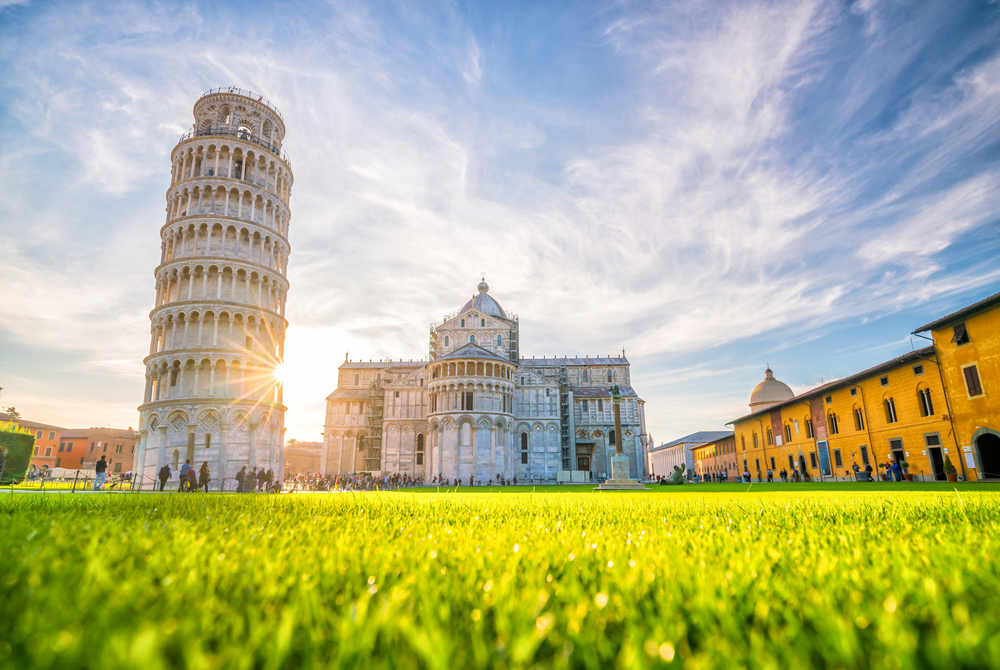
Mention Pisa and the first thing that will always spring to mind is its Leaning Tower. Measuring 56.67 metres tall on its highest side but just 55.86 metres on its lowest, its 2 degree lean attracts millions of tourists each year! It’s definitely worth seeing and, if you can, do make the effort to climb the nearly 300 steps to the seventh floor to admire the views over the Piazza dei Miracoli. One word of advice: Make sure you book tickets to the Leaning Tower of Pisa well in advance.
However, the tower is just one of many attractions in this main piazza. Also present is the Cathedral of Santa Maria Assunta, Baptistery and Campo Santo (Pisa’s cemetery), all of which are well worth the time to discover. And there is much to enjoy beyond this central square too, away from the crowds. Some examples include the 15th century Gelph Tower, the octagonal (and slightly leaning) bell tower of the Church of Saint Nicola as well as the Palazzo della Carovana in the Piazza del Cavalieri.
Check out our guide to spending 48 hours in Pisa for more inspiration about how to spend your time in the city.
Siena
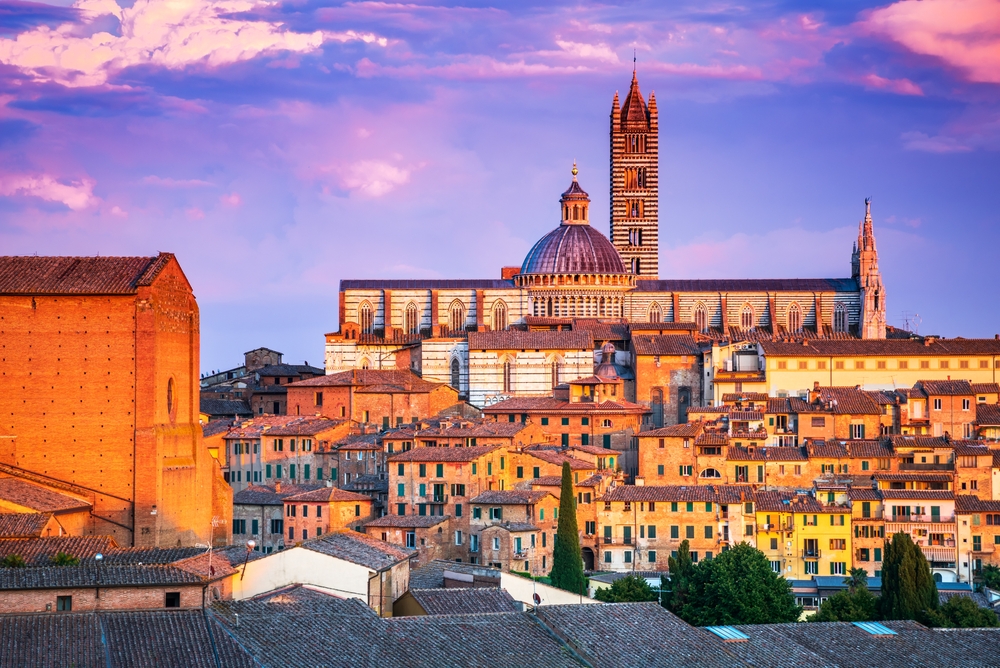
Siena is definitely one of our top 3 favourite cities in Italy. In our view, any visit to Siena should start in the central Piazza il Campo. This is where the famous palio takes place twice a year and it’s where you will also find Siena’s most famous monuments. These include the striking black and white striped Duomo along with the Torre del Mangia that reaches up over 100 metres into the sky and the adjacent Palazzo Publico. The latter houses the Museo Civico which has an impressive collection of art. The Pinacoteca Nazionale in Siena is another museum that art lovers will adore.
For a lunchtime treat, grab a sandwich from the Pizzicheria de Miccoli at Via di Citta 95.
Check out our guide to spending 48 hours in Siena for more detailed information about what to see and do in the city.
Lucca
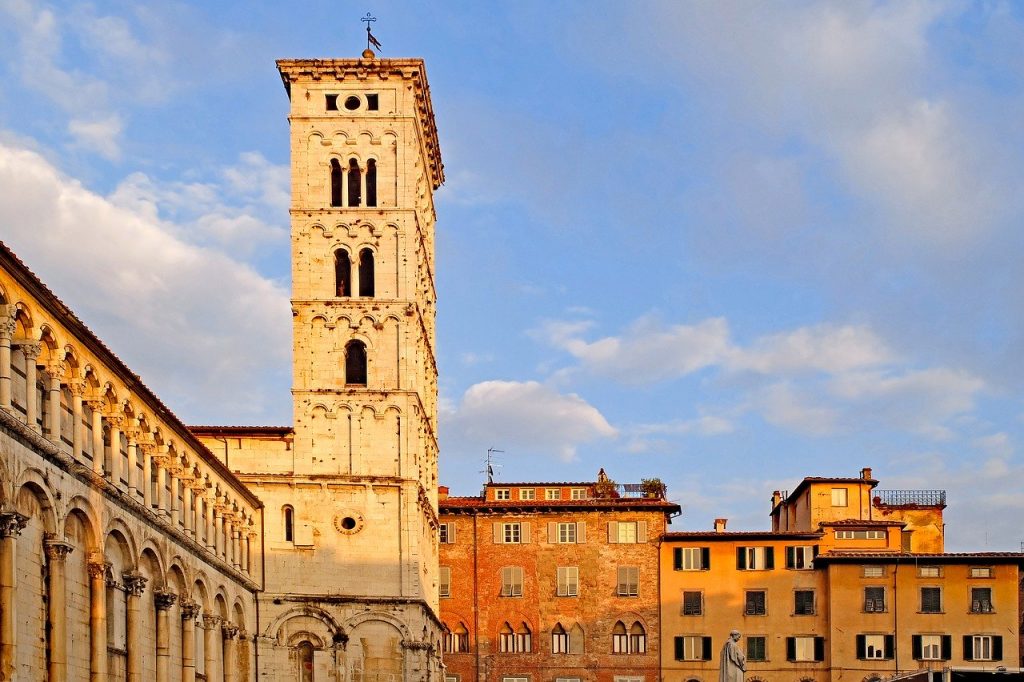
A city in the Tuscany region of Italy, Lucca is small enough to comfortably discover in a day. Lucca is most famous for its incredibly well preserved Renaissance walls that encircle the city. Stretching over 4 km long, it’s well worth starting your visit to Lucca by taking a walk along these old city walls. Don’t miss the Piazza dell’ Anfiteatro (the site of an old Roman amphitheatre) and the Torre Giunigi which is well worth climbing to admire the roof gardens and views from the top. And take the time to discover a wealth of beautiful churches within the city too. All different in style, some of the most notable include Lucca’s Duomo, St Michael’s Church (San Michele al Foro) and the Basilica of San Frediano. Enjoy a guided tour of Lucca whilst you’re there.
For everything you need to know about Lucca, check out our Lucca travel guide.
Matera
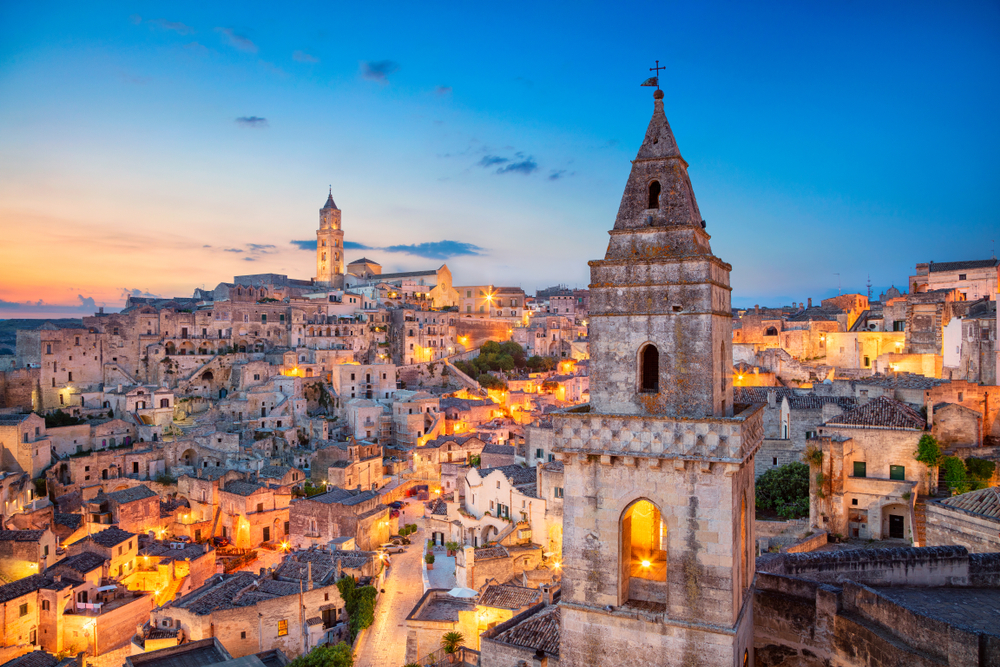
A unique city in the southern Italian region of Basilicata, Matera is famous for its sassi. Best described as homes carved into the rock, these were squalid dwellings in the 1960s but have now been transformed into boutique hotels, superb restaurants and comfortable homes. To learn more about the history of these dwellings, some of which date as far back as the Palaeolithic period, head to the Sasso Barisano.
Find out how best to spend a day in Matera with our handy travel guide to Matera.
Bergamo

Bergamo is situated in northern Italy in the Lombardy region. Bergamo is essentially split into two parts, the newer modern city below (La Citta Bassa) and the older, historic city above – La Citta Alta – accessed via a funicular as well as on foot. This old part of Bergamo is encircled by 5 km long Venetian walls and characterised by pretty cobbled streets. Here you will find the Romanesque Basilica di Santa Maria Maggiore and the main Piazza Vecchia with a central fountain and lined with cafes and restaurants. For the best views of the city, head up the 53 metre tall Campanone.
Turin
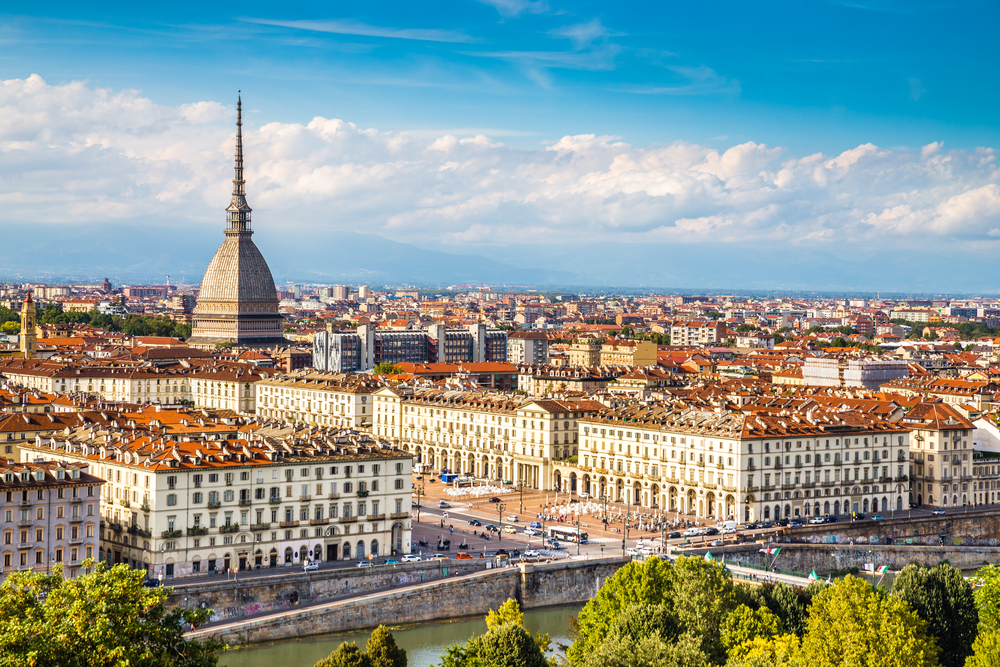
Turin is the capital city of Piedmont in the north of Italy, famous for its food and its architecture. An elegant city, it’s also the home of Italy’s most iconic car brand – Fiat. It’s most impressive building has to be the 16th century Palazzo Reale (Royal Palace) in the Piazza Castello however Turin is jam-packed with palaces and there are plenty of others also worth seeing. These include the Palazzo Madama which dates back to the 1st century BC but which was changed significantly over subsequent years.
Probably the most easily identifiable building in Turin though is the Mole Antonelliana. This was originally a Jewish Synagogue but these days, it’s the home of the National Cinema Museum. Fun fact: The Mole Antonelliana is currently the tallest museum in the world!
Ostuni
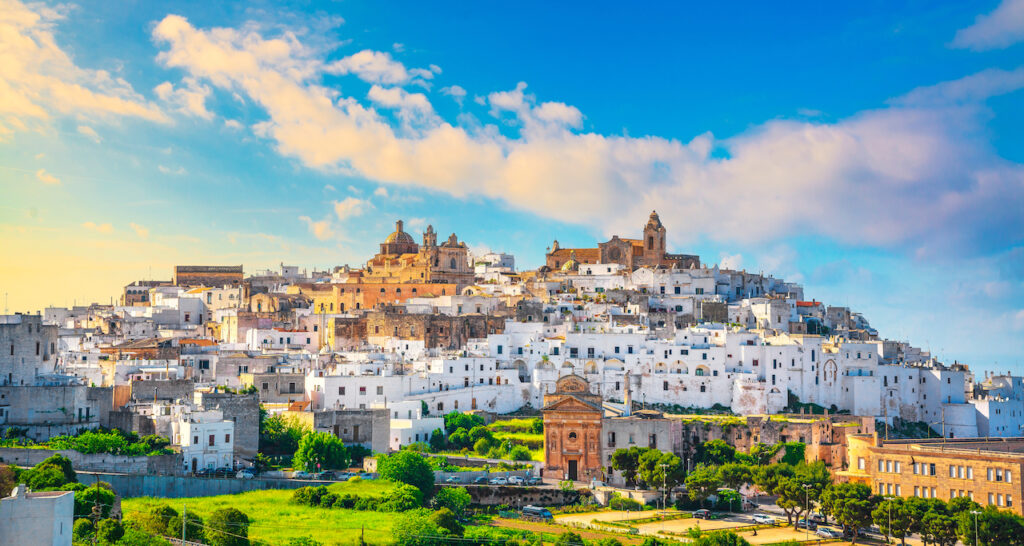
Situated in the southern Italian region of Puglia, Ostuni’s skyline of whitewashed buildings is extremely distinctive and has affectionately earned it the nickname of La Citta Bianca. Its largest building is the Basilica concattedrale di Santa Maria Assunta and its main square is the Piazza della Liberta. Otherwise, Ostuni doesn’t perhaps have the big hitting sights of some of Italy’s other cities to discover but don’t let that put you off. The city is a real labyrinth of streets, steps and alleyways which are a delight to explore.
Check out our Ostuni travel guide for further inspiration about what to see and do in Ostuni.
Como

With our love of the Italian Lakes, we couldn’t not include Como in our list of top 20 Italian cities. Sitting at the southern tip of Lake Como, a good starting point for any trip to Como is to enjoy a stroll alongside its lakeside promenade, passing through the city’s main square – the Piazza Cavour – home to the Teatro Adriano and Chiesa Valdese. Como is home to a number of important religious buildings including the Cattedrale di Santa Maria Assunta (Duomo di Como), the 11th century Basilica of Saint Addondio and the Basilica di San Fedele. Como is also home to some excellent museums such as the Museo Storico Giuseppe Garibaldi, the Como Archeological Museum (Museo Giovio), the Pinacoteca Civica (Art Gallery) and the Tempio Voltiano, a museum dedicated to Alessandro Volta.
For a more sedate few hours in Como, relax in the lakeside gardens at Villa Olmo or pay a visit to Como’s lakeside lido. Or for the best views over Como, take the funicular ride from Como up the nearby mountainside to the small village of Brunate. The views from here are terrific but if you want to venture a little further, then you can opt to walk from here to the nearby Volta lighthouse where you can enjoy some incredible 360 degree views.
Check out our Como travel guide for more inspiration about how to spend your time in this city.
Inspired to visit Italy? Then check out the Italy villa rentals available from Italy villa rental specialists, Bookings For You.


